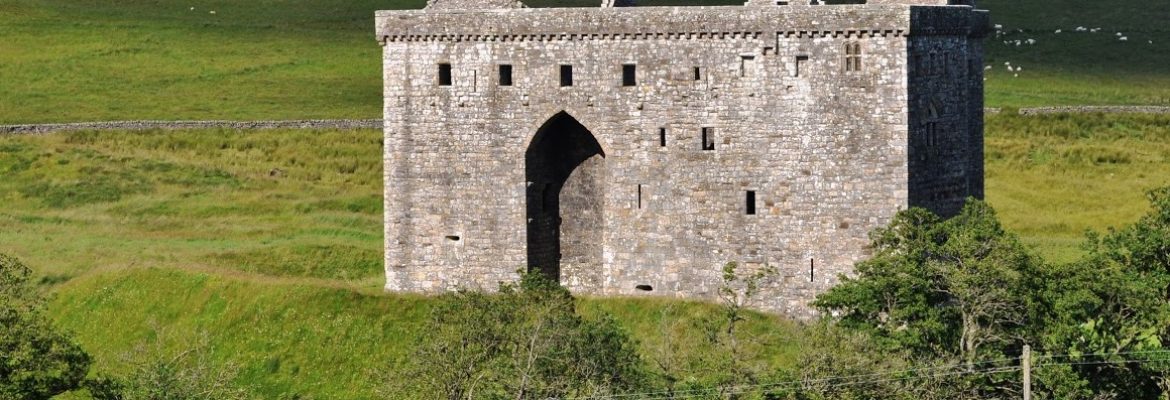Hermitage Castle, Scotland
The ‘guardhouse of the bloodiest valley in Britain’, Hermitage Castle embodies the brutal history of the Scottish Borders. Desolate but proud with its massive squared stone walls, it looks more like a lair for orc raiding parties than a home for Scottish nobility, and is one of the bleakest and most stirring of Scottish ruins. The castle is about 12 miles south of Hawick on the B6357.
Strategically crucial, the castle was the scene of many a dark deed and dirty deal with the English invaders, all of which rebounded heavily on the perfidious Scottish lord in question. Here, in 1338, Sir William Douglas imprisoned his enemy Sir Alexander Ramsay and deliberately starved him to death. Ramsay survived for 17 days by eating grain that trickled into his pit (which can still be seen) from the granary above. In 1566, Mary Queen of Scots famously visited the wounded tenant of the castle, Lord Bothwell, here. Fortified, he recovered to (probably) murder her husband, marry her himself, then abandon her months later and flee into exile.It is thought that the name derives from Old French: l’armitage – guardhouse. The castle was known as the guardhouse of the bloodiest valley in Britain, and the “Strength of Liddesdale”.
Hermitage Castle was supposedly built by one Nicholas de Soulis around 1240, in a typical Norman Motte and Bailey pattern. It stayed in his family until approximately 1320, when his descendant, William de Soulis forfeited it because of suspected witchcraft and the attempted regicide of King Robert I of Scotland. Legend has it that Soulis’ tenantry, having suffered unbearable depredations, arrested him, and at the nearby Ninestane Rig (a megalithic circle), had him boiled to death in molten lead. In actuality, he died, a prisoner, in Dumbarton Castle. Hermitage Castle is reputed to be haunted by Redcap Sly, de Soulis’s familiar spirit.


